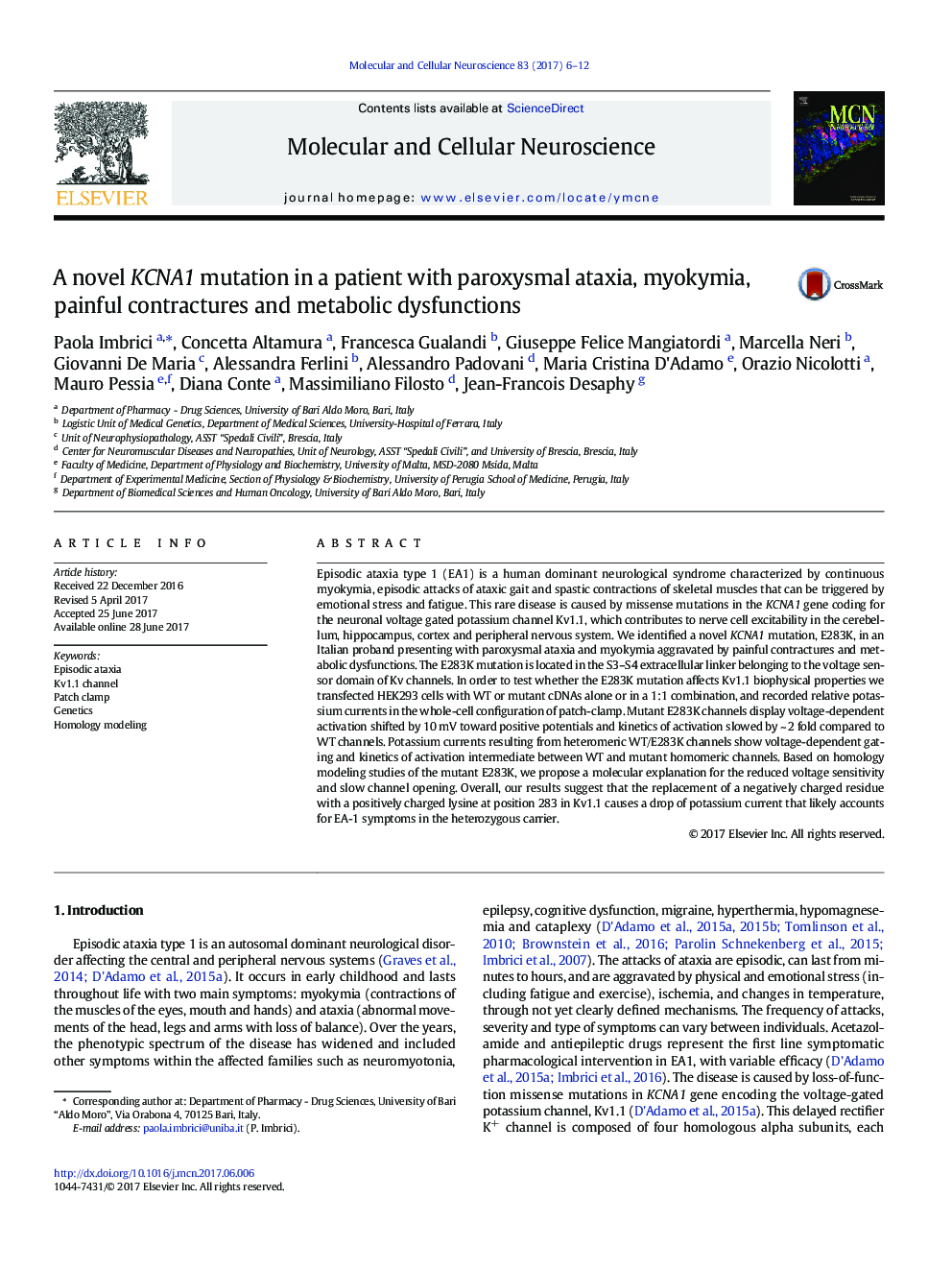| کد مقاله | کد نشریه | سال انتشار | مقاله انگلیسی | نسخه تمام متن |
|---|---|---|---|---|
| 5534399 | 1551123 | 2017 | 7 صفحه PDF | دانلود رایگان |

- We report a new Kv1.1 mutation, E283K, associated with a broader EA1 phenotype.
- Mutant channels show slower activation and positively shifted voltage dependence.
- K283 might limit the flexibility of the S3-S4 linker and the consequent movement of S4.
- E283 in the S3-S4 linker of Kv1.1 plays a role in voltage-sensitive gating.
- The drop of potassium current likely causes ataxia, myokymia and altered mechanical sensitivity.
Episodic ataxia type 1 (EA1) is a human dominant neurological syndrome characterized by continuous myokymia, episodic attacks of ataxic gait and spastic contractions of skeletal muscles that can be triggered by emotional stress and fatigue. This rare disease is caused by missense mutations in the KCNA1 gene coding for the neuronal voltage gated potassium channel Kv1.1, which contributes to nerve cell excitability in the cerebellum, hippocampus, cortex and peripheral nervous system. We identified a novel KCNA1 mutation, E283K, in an Italian proband presenting with paroxysmal ataxia and myokymia aggravated by painful contractures and metabolic dysfunctions. The E283K mutation is located in the S3-S4 extracellular linker belonging to the voltage sensor domain of Kv channels. In order to test whether the E283K mutation affects Kv1.1 biophysical properties we transfected HEK293 cells with WT or mutant cDNAs alone or in a 1:1 combination, and recorded relative potassium currents in the whole-cell configuration of patch-clamp. Mutant E283K channels display voltage-dependent activation shifted by 10Â mV toward positive potentials and kinetics of activation slowed by ~Â 2 fold compared to WT channels. Potassium currents resulting from heteromeric WT/E283K channels show voltage-dependent gating and kinetics of activation intermediate between WT and mutant homomeric channels. Based on homology modeling studies of the mutant E283K, we propose a molecular explanation for the reduced voltage sensitivity and slow channel opening. Overall, our results suggest that the replacement of a negatively charged residue with a positively charged lysine at position 283 in Kv1.1 causes a drop of potassium current that likely accounts for EA-1 symptoms in the heterozygous carrier.
Journal: Molecular and Cellular Neuroscience - Volume 83, September 2017, Pages 6-12